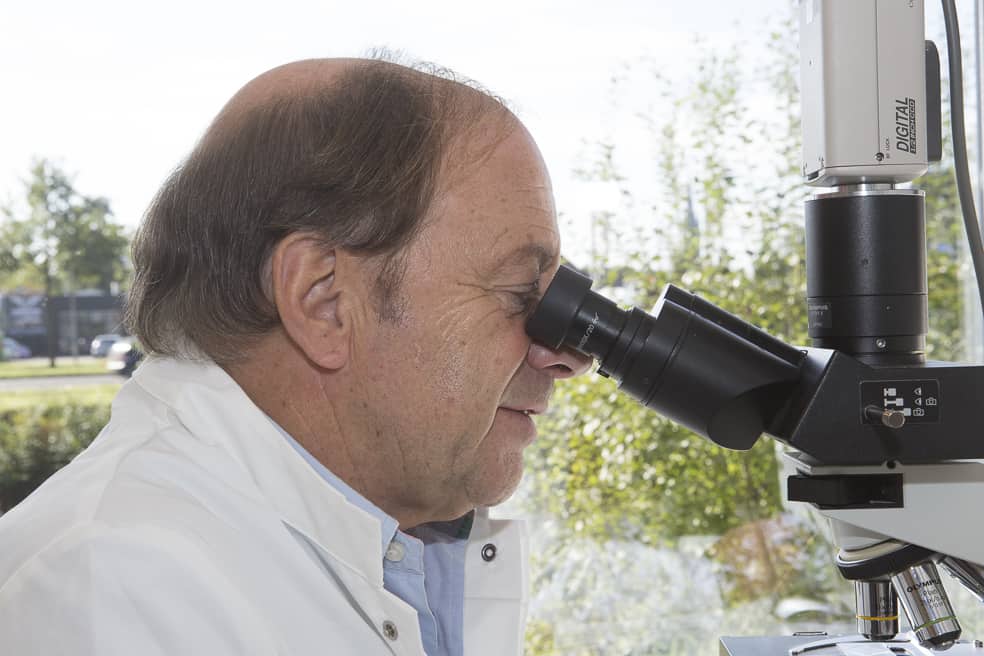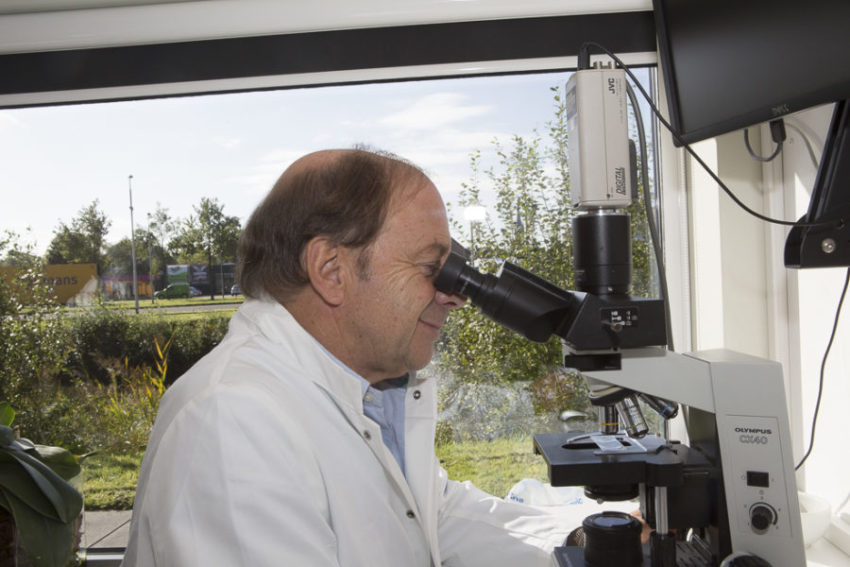

Clinical diagnostics
Clinical diagnostics is one of my hobbyhorses. This means that based on the symptoms of the pigeon(s) plus the story (complaints) of the owner and the questions and answers about these complaints (anamnesis), you will look over several possible causes of the problems and come to a (probability) diagnosis.
As there are so few veterinarians in the pigeon world who have some knowledge of pigeon medicine, you are obviously consulted as a pigeon veterinarian by pigeon fanciers from many different countries. If you can also speak several languages, this contributes to a better understanding of the problem!
Asking questions
Already, from the beginning of my pigeon medicine career the pigeon fanciers knew how to find me. That started in the Netherlands, of course, but quickly spread to Belgium, Germany, England and France. You slowly but surely learn how to formulate your questions in order to get clear answers. You have to work almost schematically to gain insight into the problems you are consulted about. If the owner doesn’t see any clear symptoms, you will have to ask very general questions such as:
1. How long has the problem existed?
2. Are they eating normally?
3. Are they drinking normally?
4. How old are the pigeons?
5. Are they losing weight?
6. What do the droppings look like, for example watery or
slimy and then which colour: green, brown or yellow.
7. Are the pigeons vomiting?
8. Are they short of breath, are they rattling?
9. Are there any nervous symptoms?
10. Are they lame or having wing problems?
11. Is there mortality in the flock and how long does it take
before they die and what percentage approximately?
12. Have they been vaccinated against PMV every year,
including the breeders, and when were they last
vaccinated?
13. Do they have yellow spots or tissue in their beaks?
14. Do they have lumps on the eyelids, nose or beaks?
All questions that are very important to gain insight
into the problems in the loft.
Excluding diseases
Dependent on the answers to the questions asked, we will further break down the questions to arrive at a differential diagnosis! That is, a group of diseases to which the reported problems may belong. The better your questions, the more likely you are to exclude a number of diseases. If you have the pigeons in the clinic, you can easily and quickly do microscopic faecal research and take swabs from the throat and cloaca. If nothing turns up from these investigations, you can immediately exclude a number of diseases.
Further research
Once the pigeons come to the clinic, we soon get a first impression when we take a look at the condition of the basket(s). They are usually clean both inside and outside, which generally says something about the owner or caregiver.
In case of problems with the front airways and/or if the pigeons are not fresh, I get a schematic drawing done of the loft. This also provides important information.
Before we take the pigeon in our hands, the pigeon is often first observed quietly. We look at the general condition, droppings, breathing and possibly noticeable symptoms such as trembling, turning the head, position of the wings, eye problems such as swelling, or membranes on one or both sides. We then take the pigeon in the hand and assess the nutritional condition from normal to too lean or too fat! We also want to know if it is a cock or a hen and if that is not clear, we ask the owner.
We also immediately feel the rump and the abdomen to see if everything is normal there. The feathers are also checked to ensure that there are no blood feathers or other damage! We are also looking for ectoparasites on the flight feathers, rump and neck.
Then we look at the head and beak, the colour of the nostril cere, the colour of the eyelids and any swelling of the eyelids. We open the beak and look at the colour of the mucous membranes. We assess the opening of the oesophagus (must be a calm ‘stripe’) and see if there are yellow/white spots, tissue or maybe lumps present. And where these abnormalities are located!
We press the nostril cere and if the pigeons immediately start sneezing that is abnormal and shows a slight inflammation of the nasal mucous membrane (ornithosis complex) with or without a little clear to yellowish discharge.
We press the on the back to hear if they are rattling.
Condition of the pigeon
The head of the pigeon is generally an important indicator of its overall condition. Glossy eyes, white eye edges, white noses and tight heads, i.e. no protruding feathers around the ears and certainly no visible external ear openings. The neck should also be smooth and shiny and certainly not rough and ‘scaly’. When opening the wings we should not feel any abnormal resistance as in the case of shoulder or elbow-paratyphus. Also in spring after a long, obligatory aviary period (thanks to all those birds of prey, about 10 times more than 25 years ago) we very regularly see shoulder injuries in all gradations occurring as well as after a ‘heavy’ flight, for example in a head wind, but also in hard tail wind all as a result of damage to ligaments (tendons), cartilage and sometimes by a total dislocation (luxation) of the shoulder joint, but then they can’t fly at all and it will never be all right again. The wing is then higher on the tail (angel wing).
Breast muscles
The tail bones and abdomen are then inspected. An open tail bone and thick abdomen (rump) is not good, unless it concerns a hen that has to lay.
Knowledge of diseases
It is very important to know about the occurrence of diseases (problems), I mean how often one disease occurs compared to another. For example, in summer I see 100 crooked flyers as a result of invisible shoulder injuries compared to 5 as a result of paratyphus and much less than 1 as a result of streptococcus! In winter this is the other way around, with the proviso that we rarely find streptococcal infections, but much more paratyphus!
Differential diagnosis
In making the differential diagnosis, the experience of the treating veterinarian is therefore of great importance. He has to start making a long list of possible diseases and then make a so-called probability diagnosis. This is easier in the case of a group of pigeons and more difficult if it concerns only one pigeon. The last 20 years, we have been consulted daily from all over the world, about 40 pigeon countries including Iraq, Libya, Morocco, Egypt, South Africa, China, Romania, Poland etc. As long as you can save pigeons and satisfy people you have a wonderful profession and make pigeon friends all over the world.
BELGICA DE WEERD B.V. I Postbus 4607 I 4803 EP Breda I Nederland
T +31 76 560 02 22 I F +31 76 565 35 70 I info@belgicadeweerd.com I www.belgicadeweerd.com


